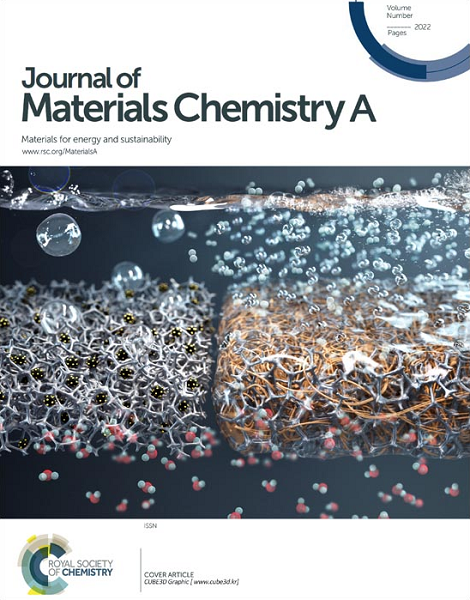Tuning the proton concentration and uptake kinetics of BaFeO3 based oxygen electrode for reversible protonic ceramic fuel cells
IF 10.7
2区 材料科学
Q1 CHEMISTRY, PHYSICAL
引用次数: 0
Abstract
Protonic ceramic fuel cells (PCFCs), as efficient energy storage and conversion device, have great potential to address the critical challenges of energy shortage and environmental pollution. Improving the proton concentration and uptake kinetics of promising oxygen electrode materials is an effective solution to promote the widespread application of PCFCs. The proton uptake capability and electrochemical performance of BaZr0.88-xFexY0.12O3-δ (BZFY) were investigated by optimizing the iron content (x=0.6, 0.7 and 0.8) to achieve superior catalytic activity. It is demonstrated that adjusting the iron ratio to 0.7 yields a proton concentration of 0.36 mol% and proton surface exchange kinetics of 1.99×10-6 cm s-1 at 600 °C. When applied as oxygen electrode, the enhanced proton reaction step in BZFY0.7 exhibits the lowest polarization resistance and exceptional long-term stability. The full cell with BZFY0.7 oxygen electrode shows 0.4 Wcm-2 at 600 °C, and in electrolysis mode, the BZFY0.7 oxygen electrode shows good catalytic activity for water electrolysis with 0.45 A/cm² current density at 1.3V.可逆质子陶瓷燃料电池中BaFeO3基氧电极的质子浓度和吸收动力学的调整
质子陶瓷燃料电池(pcfc)作为一种高效的能量存储和转换装置,在解决能源短缺和环境污染的严峻挑战方面具有巨大的潜力。提高氧电极材料的质子浓度和吸收动力学是促进pcfc广泛应用的有效途径。通过优化铁含量(x=0.6、0.7和0.8),研究了bazr0.88 - xfexy0.120 -δ (BZFY)的质子吸收能力和电化学性能。结果表明,将铁比调整为0.7,在600℃时质子浓度为0.36 mol%,质子表面交换动力学为1.99×10-6 cm s-1。当用作氧电极时,BZFY0.7中增强的质子反应步骤具有最低的极化电阻和优异的长期稳定性。在电解模式下,当电流密度为0.45 A/cm²,电流密度为1.3V时,BZFY0.7氧电极在电解模式下表现出良好的催化活性。
本文章由计算机程序翻译,如有差异,请以英文原文为准。
求助全文
约1分钟内获得全文
求助全文
来源期刊

Journal of Materials Chemistry A
CHEMISTRY, PHYSICAL-ENERGY & FUELS
CiteScore
19.50
自引率
5.00%
发文量
1892
审稿时长
1.5 months
期刊介绍:
The Journal of Materials Chemistry A, B & C covers a wide range of high-quality studies in the field of materials chemistry, with each section focusing on specific applications of the materials studied. Journal of Materials Chemistry A emphasizes applications in energy and sustainability, including topics such as artificial photosynthesis, batteries, and fuel cells. Journal of Materials Chemistry B focuses on applications in biology and medicine, while Journal of Materials Chemistry C covers applications in optical, magnetic, and electronic devices. Example topic areas within the scope of Journal of Materials Chemistry A include catalysis, green/sustainable materials, sensors, and water treatment, among others.
 求助内容:
求助内容: 应助结果提醒方式:
应助结果提醒方式:


